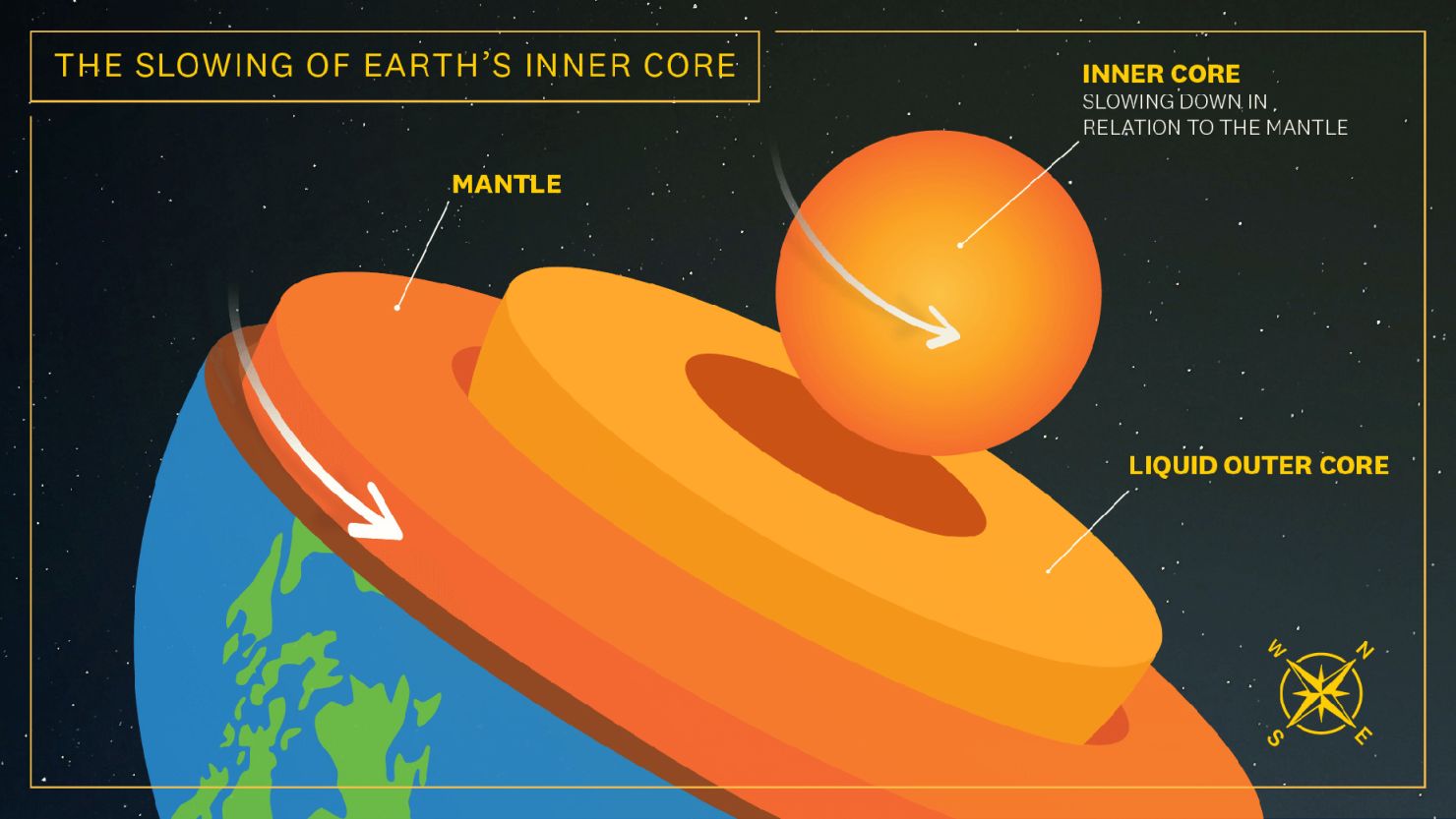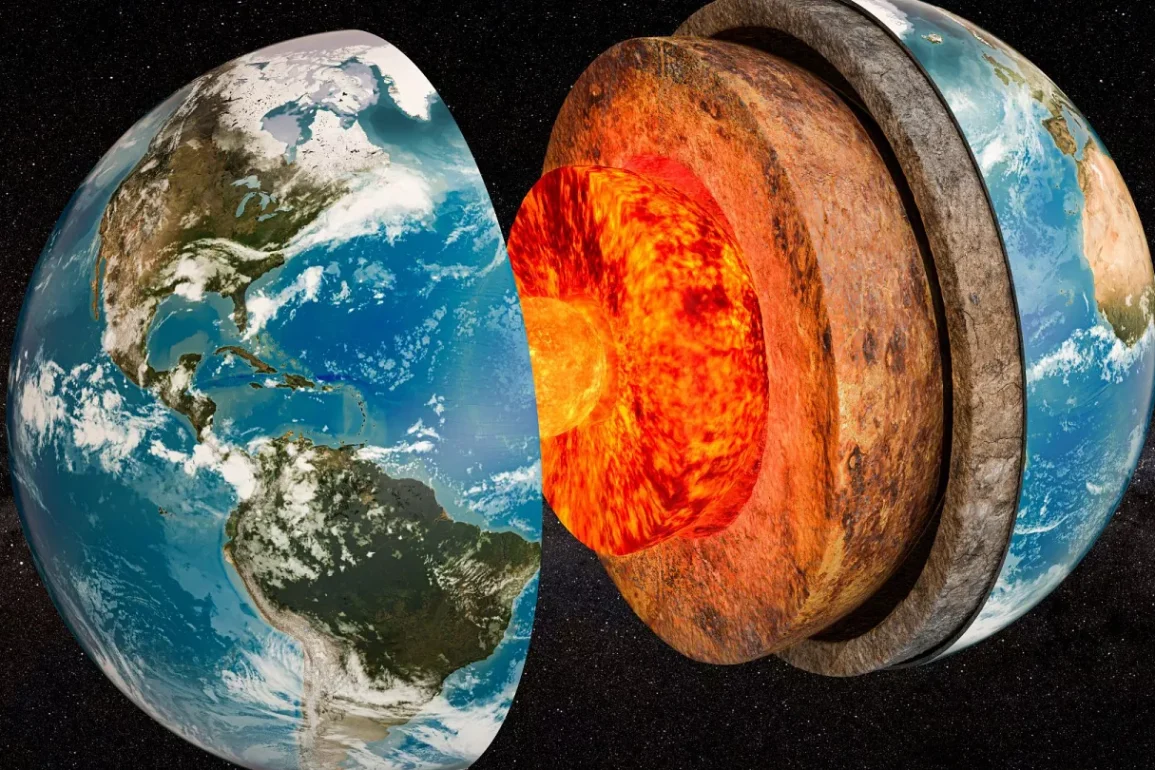Deep within the Earth lies a solid metal inner core that rotates independently from the rest of the planet. This mysterious movement has intrigued scientists since its discovery in 1936 by Danish seismologist Inge Lehmann.
The inner core’s rotation speed and direction have been subjects of intense debate, with evidence suggesting significant changes in its spin over recent years. However, researchers have been divided on the core’s exact behavior and its implications.
Observing Earth’s deep interior directly is impossible, complicating the study of the inner core. Seismologists have relied on analyzing waves from large earthquakes to understand the core’s motion.
By comparing waves of similar strengths that passed through the core at different times, scientists have been able to measure changes in its position and calculate its spin. This method has revealed the core’s complex rotational dynamics.
The idea of differential rotation in the inner core was proposed in the 1970s and ’80s, but it wasn’t until the ’90s that seismological evidence supported this phenomenon. Yet, interpretations of these findings have varied, primarily due to the difficulty of making detailed observations and the limited data available.
Consequently, studies have disagreed on the rotation rate and direction, with some even suggesting the core might not rotate at all.
A promising model proposed in 2023 suggested that the inner core had previously spun faster than the Earth but has been slowing down, even moving backward relative to the fluid layers around it. Some experts cautioned that more data was needed to confirm this hypothesis.

New research published in June 2024 in the journal Nature supports this model, indicating that the core’s deceleration is part of a 70-year cycle of speeding up and slowing down.
The new findings provide compelling evidence that the inner core’s rotational speed follows a 70-year cycle. This research, led by Dr. John Vidale, confirms the core’s slowdown and suggests that the inner core might soon start speeding up again. This conclusion is based on observations of seismic waves from earthquakes and nuclear tests that have passed through the inner core over the past few decades.
Despite these advances, not all scientists are convinced that the debate is settled. The inner core’s effect on the Earth’s magnetic field remains an open question. The core’s solid metal composition and its interaction with the liquid outer core generate electrical currents that power the Earth’s magnetic field. A slower-spinning core might affect this magnetic field and slightly shorten the length of a day.
Seismologists have long tracked two types of seismic waves, P waves, and S waves, to study the Earth’s interior. P waves move through all matter, while S waves only move through solids or very viscous liquids.
Observations since the 1880s suggested that the Earth’s core was molten, but anomalies in P wave behavior led Lehmann to propose the existence of a solid inner core within the liquid outer core. Recent studies tracking seismic waves since 1964 have supported the 70-year rotation cycle of the inner core.
Future research will continue to refine our understanding of the inner core’s rotation. The depth and inaccessibility of the inner core mean that uncertainties remain, and more data and interdisciplinary tools are needed to investigate further.
Changes in core spin are imperceptible to people on Earth’s surface, but they hold potential for understanding the planet’s deep interior and its connection to surface phenomena. The inner core’s rotation might help power the Earth’s magnetic field, but its precise role requires further study. Novel methodologies will be crucial in answering ongoing questions about the Earth’s inner core.

